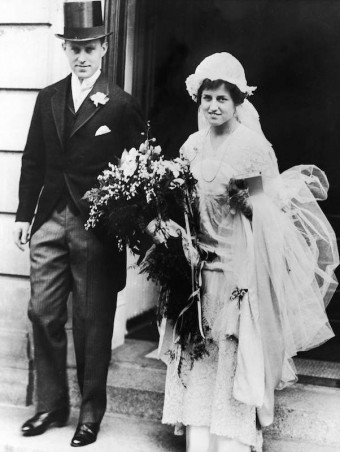______________________________
An item from news.com yesterday:
TECHNICALLY, the kid was right but it probably wasn’t the response her teacher was looking for. The primary school girl was asked to unscramble three “sight words” (for those who don’t have children, that means words that don’t sound the way they are spelled) that have been jumbled, with hilarious results. Instead of writing “We have this” the child wrote . . .
______________________________
A second item from news.com, also yesterday:
THE parents of a primary school in the United Kingdom didn’t see this Easter message coming. A text sent to parents to remind them about an Easter church service over the weekend made one embarrassing mistake which changed the entire context of the message. A photograph was posted on Twitter of the message . . .
______________________________
An email from Byter David B, who hails from Derbyshire, commenting on yesterday’s quote for the day:
Your quote from John MacDonald about integrity reminded me of an old Yorkshire saying: "There's nowt wrong with right folk" (nowt is a dialect word for nothing). It puzzled me as a child but it actually neatly sums up what John MacD was saying "If see a man who won't cheat, then you know he never will."
Thanks, David.
______________________________
David’s item about Yorkshire-speak reminds me of a story I heard many years ago.
The Australian Rugby League team was in England for a Test series and, as is usual, played preliminary matches against local teams in the Northern counties.
An Australian supporter, wanting to go to the toilet, put his hat on his seat to reserve it. When he got back there was a big Yorkshire man sitting on his hat and eating fish and chips.
“Hey,” said the Aussie, “that’s my seat, I had my hat there.”
Replied the Yorkshire man “Booms keep seats oop ‘ere, not ‘ats.”
______________________________
I also received an email from the man who keeps me correct by checking each item I post and then notifying me if I have said anything incorrect – Byter Martin S.
Martin’s words to me this time were sparse but accurate:
Rose Kennedy - 1925. I think not
July 22, 1890 – January 22, 1995
This was in reference to Rose Kennedy’s Quote for the Day, where I had written:
It has been said, 'time heals all wounds.' I do not agree. The wounds remain. In time, the mind, protecting its sanity, covers them with scar tissue and the pain lessens. But it is never gone.
- Rose Kennedy (1890 - 1925)
Martin is correct, mea culpa.
Rose Kennedy died on 22 January 1995 at the Kennedy family compound in Hyannis Port from complications from pneumonia at the age of 104, having outlived her husband by a quarter of a century. She was survived by five children, 26 grandchildren, and 42 great-grandchildren.
Joseph Kennedy and Rose Kennedy, wedding.
______________________________
A question came up in the weekly Trivia comp last night: In what decade of the 20th century were barcodes developed?
The answer was the 1940’s, in 1949 to be precise, which I found hard to visualise in that I wasn’t aware that scanners existed then. When I asked about the Triviamaster, Graham, suggested that I look it up and that no doubt it would appear in Bytes.
Following are the facts:
- Barcodes were developed by Bernard Silver and Norman Joseph Woodland as a result of the president of a local food chain requesting research to develop a system to automatically read product information during checkout.
- Woodland’s first idea was to use patterns of ink that would glow under ultraviolet light, and the two men built a device to test the concept. It worked, but they encountered problems ranging from ink instability to printing costs. Nonetheless, Woodland was convinced he had a workable idea.
- Woodland remained working on it and came up with the linear bar code, using elements from two established technologies: movie soundtracks and Morse code – Morse Code by turning the dots and dashes downwards into lines and the movie sound system to read the lines.
- As a result of further research he replaced the wide and narrow lines with concentric circles, so that they could be scanned from any direction. This became known as the bull's-eye code.
- Silver and Woodland filed for a patent in 1949.
- In 1952 they built an actual bar code reader, as large as a desk.
- Silver died in 1962 before he saw the success of the system he had helped develop.
- In 1974, the first product with a bar code was scanned at a check-out counter. It was a 10-pack of Wrigley's Juicy Fruit chewing gum.
Norman Joseph Woodland (left) and Bernard Silver







No comments:
Post a Comment
Note: Only a member of this blog may post a comment.